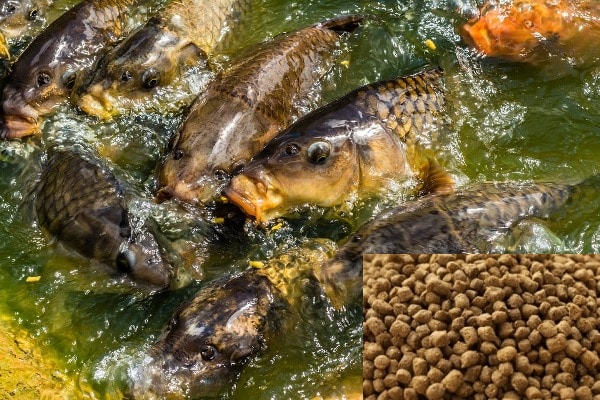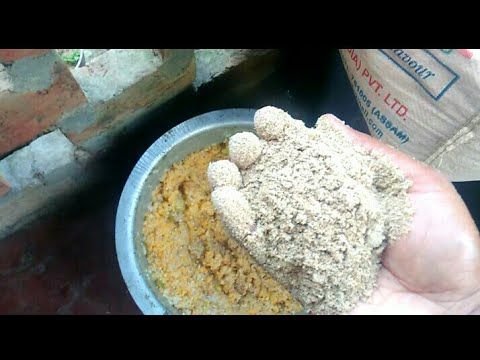
Feeding your fish is not as difficult as you may thing. Fish are living creatures that need to be fed in order to survive. They don’t have a lot of variety when it comes to what they can eat. But what they do eat needs to be healthy for them and their tank. In this article, we will teach you what fish should and shouldn’t eat.
And the best diet should be based on what type of fish you have, how often you should feed them. And also you should know how much food they need each time. We will provide recipes that will help you in making your fish food at home, then you are covered!
What is fish food?

We will take a look at what should go into the diet of your pet fish. And also how important it can be when they won’t eat anything else. We’ll also discuss where these foods come from and what’s in them. No one wants to have their beloved pet die because of lack of nutrition so let’s start with the definition.
“Fish food” is a term that can mean different things to different people. What one person might think of fish food someone else might not even consider it to be the same thing.
Three main requirements: protein, carbohydrates (including fiber), and fats are all necessary components of sustaining life.
Protein Requirements: Fish will always have some dietary protein from the types of food they eat. Protein needs should be met with a diet consisting of about 30-35% protein for most species of fish food. But the amount can vary depending on things like growth rate or activity level.
Read Also:Yoruba Foods: 10 Yoruba Foods and Their Ingredients
Fish food should also be provided with animal foods like worms, insects, or plants such as green peas on occasion. If you want to supplement your pet’s diet with additional protein. Also, try adding shrimp pellets or fresh shrimp two times per week. Shrimp can be used for all life stages but it is not recommended if you have a pregnant fish.
Carbohydrate Requirements: Fish need carbohydrates for energy and to feed their intestinal bacteria, which help digest the food they eat. Carbohydrates are found in plants such as zucchini and plantains but also animal-based foods like worms or insects.
Fat Needs: Fish food should be met with healthy fats from vegetable sources like coconut oil, as long as it is not more than 25% of the total calories consumed per day. Most experts recommend not exceeding this amount because too much fat may lead to too much weight gain and obesity.
Calcium Requirements: Fish food need calcium in their diets. This because they cannot produce it themselves or have some difficulties absorbing it from their watery environment.
How do you feed a fish

Fish eat primarily with their gills. They also have a mouth, but they don’t use it to feed themselves and should not be fed through the mouth. To avoid overeating, you can slowly sprinkle pellets or flakes over the top of your tank every few days for them to nibble on at their leisure. You’ll know that your fish has eaten when they stop chasing the pellets.
Feeding your fish is very easy and should be done a few times per week at most to ensure that they are getting what they need for optimal health. Here’s how:
First, purchase some nutritious food in whatever form you prefer (pellets or flakes).
Second, sprinkle a small amount of food over the top of your tank. If you have more than one fish in your tank, make sure to put enough flakes or pellets for each individual fish to eat their fill and not overeat. Fish do not swallow air when they eat so it’s irrelevant whether or not they are moving.
Finally, wait for your fish to have a nibble from the top of their tank every few days. You’ll know that they’ve eaten when they stop chasing after the flakes and pellets in order to consume them all at once.
That’s all you need to do in terms of Feeding your fish.
Types of fish food

Fish food comes in many different shapes and forms. Types of fish food can be pellets, flakes, or live feeds such as brine shrimp. You can buy them in bulk containers or small packets.
Fish food comes with two types of nutrition, either dry or wet. The ones that are dry can be left out in the open while wet types must be refrigerated. Types of fish food vary in price depending on the type of nutrition it provides, as well as how many pellets or flakes are in a container.
It varies in size, but the smaller ones have more pellets than flakes and are cheaper per ounce. It also comes in different colors such as orange, red, and yellow. You can freeze-dry or preserved your fish food depending on the type of food you want to buy, with regards to how often you feed your fish. These are the main two types of fish food that you can use in feeding your fish.
What does the color of your fish’s scales say about what they are feeding on?

If you have brightly colored fish, and want to know more about their diet, it is time for some detective work. It may be because they eat foods that contain pigments. What we see as blue and yellow in our world may turn out to look more like green or orange on the scales of your fish.
Other colors could come from artificial food coloring added by their owner. The color is only an indicator of what your fish eats, not what they actually are. so in feeding your fish there must be time for detective work.
Tips for feeding a variety of types of fish
It is not always easy to know what type of food your pet fish likes.
First Tips
The first step is to start by observing the natural behavior and habitat conditions in which they live. The freshwater species typically living near rivers or saltwater species that prefer habitats with high salinity levels.
Second Tips
The next step will involve adding supplements like vitamins, minerals, and proteins into their water. This gives them access to eating some through drinking it rather than having them taken in these nutrients when they feed on their natural habitat.
But you should also take into consideration that if they are not in their natural environment, then the fish food might be too rich and can lead to them having an imbalanced die.t. Therefore, it is best for fish to eat what they would naturally eat.
In order to provide more variety of foods, try adding live plants or frozen shrimp into your tank. And by so doing you will have access to both fresh fruit and vegetables. And you will have meat proteins from these items which will make them healthier overall.
Recommended For You:6 Health Benefits of Eating Good Foods
If you can’t find a natural source of protein, then there are some brands that have been specifically designed to be higher in meat proteins and offer added vitamins. so this will be suitable for fish but these types of foods should also only be used as an occasional treat. This is because eating too much will lead to them having digestive problems.
Also, In order to maintain their water quality levels, it’s best if you mix your filter media with fresh activated carbon every few weeks or replace the cartridge altogether depending on how often it needs changing. You’ll want to change out around twenty percent of your tank water per week or when necessary if testing shows high ammonia levels due to lack of filtration maintenance because this type of issue could lead to not only a tank crash, but fish death.
You should also consult an expert from time to time if there are any uncertainties about the preference over their diet. This can help you find out more information on how different fishes eat certain foods. These are the tips you can use in feeding your fish.
How to make fish feed at home

Fish feed is one of the most important things for fish. How do you make it? There are many ways to get food, but they can be expensive and time-consuming. You may even run out because we need so much! It’s really not that hard to make your own though. We will show you how easy it is to use a few simple ingredients from around your house!
First Step of Making Fish Feed

First grab some dry cereal (oatmeal, corn flakes, rice crispies) or any other grain like pasta noodles or bread crumbs that are no longer fresh enough for human consumption. Crush them up into small pieces in a baggie then seal tightly after removing air with as little movement/sound possible (a vacuum container could work well for this).
Add the dry cereal/grain mix for additional nutrition. You now have fish feed! If you want to enrich with vitamins add them after mashing all ingredients together (fish flakes would work well as long as they are not expired) then seal tightly again until ready to use.
Also ReadPrices of Foodstuffs in Nigeria
Second Step of Making Fish Feed
Next grab some canned cat food, dog food, or any kind of meat that can be broken into small pieces. Remember to check expiration dates on foods. And if using wet items make sure it has been mashed up in a bowl first so you don’t have chunks floating around in your container!
Store at room temperature unless otherwise directed by manufacturer’s instructions then enjoy watching your little buddies gobble it down like there is no tomorrow!.
Conclusion
So now you should be ready to feed your fish! Remember that the more variety of food you offer them, the better. As long as there’s something for all their little mouths, they’ll grow big and strong in no time. Now get cracking with those recipes we know how much work it can be feeding an army every day! And don’t forget to share this post on social media so everyone knows how easy it is to take care of a fish.










